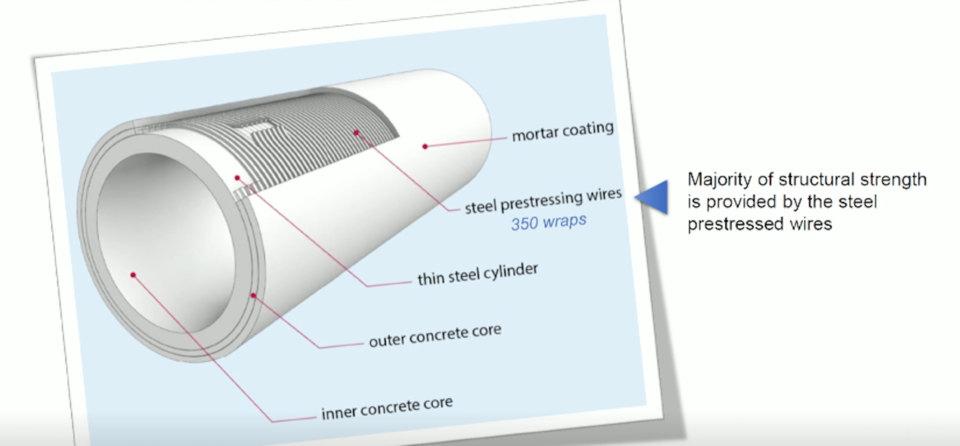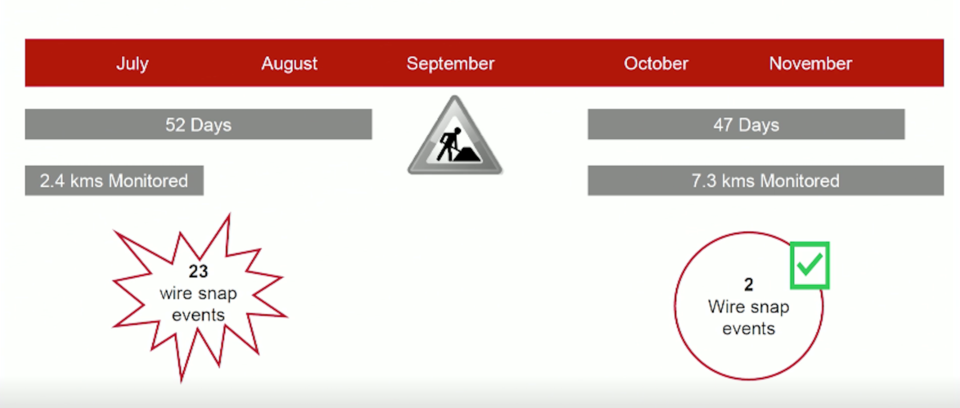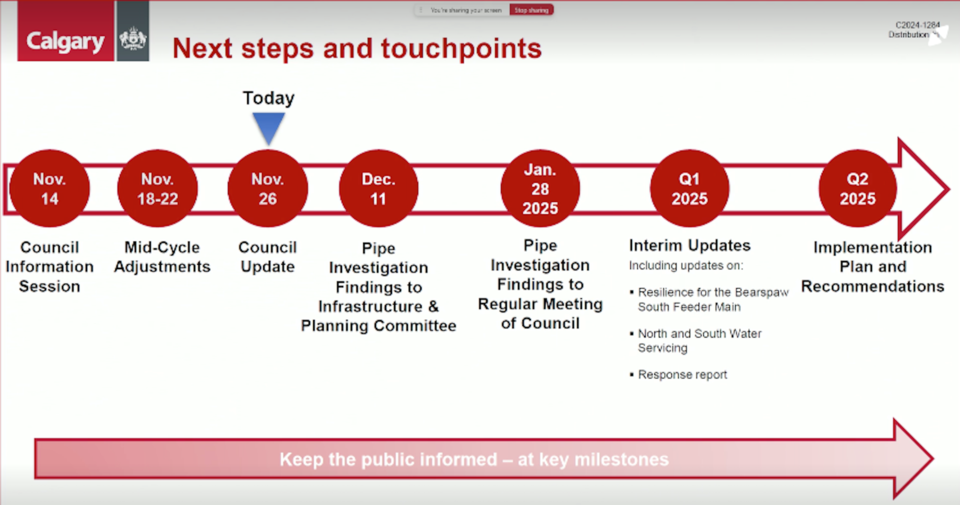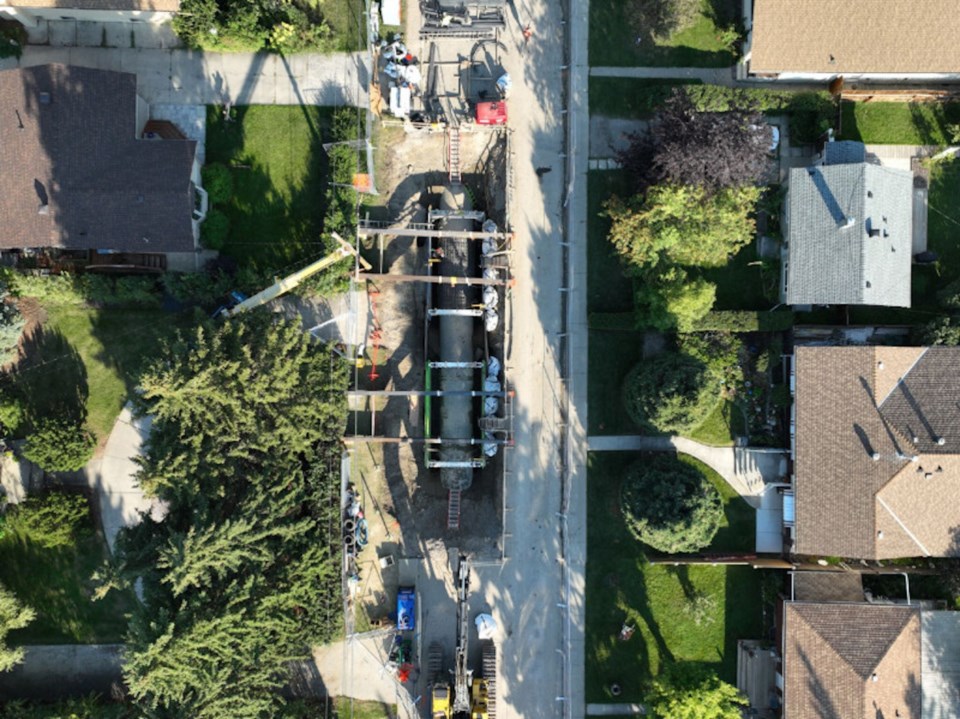The City of Calgary is looking at building redundancy in its water distribution system as a result of this past summer’s catastrophic main feeder break which caused long-lasting water restrictions for Calgary, Airdrie, and other surrounding communities.
The Bearspaw South feeder main has been stabilized following the completion of the last 29 repairs, according to an update on the pipe failure investigation during Calgary’s City council meeting on Nov. 26. The report findings are meant to inform Calgary’s asset management decisions and future infrastructure investments.
Some initial steps being taken include monitoring and looking into how to build redundancy within the system.
Calgary Mayor Jyoti Gondek asked if administration should have acted sooner or could have known about the pipe condition before the June 5 rupture took place. General manager of infrastructure services Michael Thompson explained the City already had an inspection scheduled for this fall prior to the break during the low demand season, but these things took time and resources to plan.
The investigation findings showed multiple factors led to the deterioration of the pipe, including areas of soil with high chloride levels, microcracking, and hydrogen embrittlement of the pipe.
“A different combination of factors played into the deterioration of the different repair locations that we made,” said Francois Bouchart, Calgary’s director of capital priorities and investment.

Chloride levels were not uniform along the pipe but high levels in some areas led to corrosion of the wires. The outer layer of mortar meant to protect the pipe revealed microcracks resulting in chloride penetrating deeper into the concrete and accelerating natural corrosion of the wires, Bouchart explained.
“We had corrosion that in some cases, but not all cases, was driven by these high chloride levels,” Bouchart said.
Ward 2 Coun. Jennifer Wyness asked about the suspected cause for some soil samples having higher levels of chloride, which city officials said would be further discussed at the Dec. 11 meeting.
“There is [some] correlation with de-icing material that is used on roads,” Thompson acknowledged.
The pipe wires also tended to exhibit brittleness, not seen over the whole length of the pipe.
The pre-stressed concrete pipe of the newer generation, which makes up three per cent of the system, doesn't have the brittle issues found in the pipes of the 1970's, said Bouchart. A significant portion of the 769 kilometres of feeder main was built in the 1970s and 1980s. Approximately 23 per cent of the total system has been inspected, focusing on older pipes.
Next steps
Two options the City is looking at to improve the system include lining existing pipe with a new pipe or building a new parallel pipe, potentially using micro tunnelling. Criteria being considered for the two options include the resilience achieved, construction time, impacts of construction, and cost.
Building redundancy is part of Calgary’s long-range plan, Bouchart noted, which will be presented to council in the new year.
“If you have redundancy it means if you have a failure you can still continue to supply customers as they need the water,” he said.
In the last 11 years, Calgary experienced 17 feeder main breaks. Bouchart noted it was only this year when the largest pipe in the system broke that the City felt an impact.
He said this is because previous failed pipes had the redundancy to be able to continue providing service to the City without impacting customers.
After the original main break was fixed in July, acoustic fibre optic instrumentation was installed in certain sections allowing monitoring to detect exact locations of wire breaks. Early next year, additional acoustic fibre optics will be installed, he confirmed.

The City monitored 2.4 kilometres of pipe and heard 23 wire snaps over 52 days in July. With that information, as well as an investigation using a robot and pipe diver, they repaired 21 more pipe segments in September.
In October and November, they monitored a 7.3 kilometre section of pipe for 47 days and heard only two wire snaps.
“These findings are extremely important in terms of understanding how the pipe is performing right now,” said Bouchart. “The two snaps over that 7.3 kilometres can be put into context by the fact that there are over half a million wire wraps over that length of pipe and, therefore, two wire snaps is very, very small and insignificant compared to the total number of wire wraps that we have in our system.”
Calgary officials, together with consultants, developed a model based on ongoing monitoring to predict the number of repairs needed over the next 30 years.
“At this point in time, the model is telling us that we might need one repair at most in the next five years,” Bouchart said. “This gives us the time that we need to then do our rehabilitation of our system.”
A critical parts inventory will ensure they have the parts needed for urgent repairs.
This full pipe investigation report will be released to council and the public on Dec. 11.

An independent review is also underway, but the City initiated their inspection to come up with information sooner to help them plan for the future. In the spring, reports on the redundancy of the Bearspaw South feeder main will be brought to council, as well as information on servicing projects.



